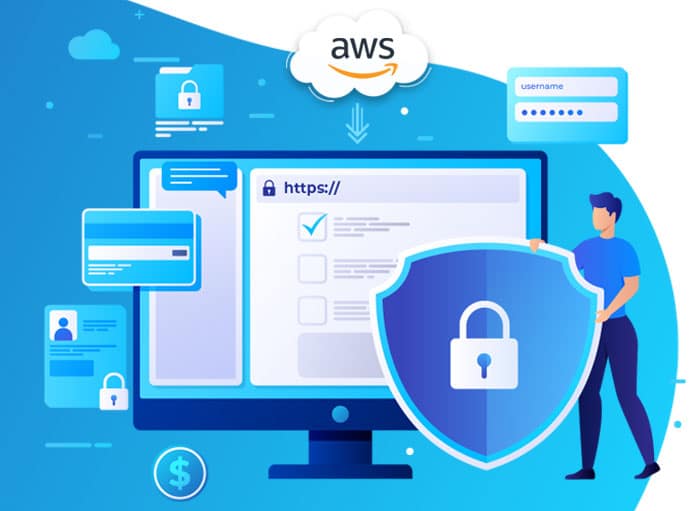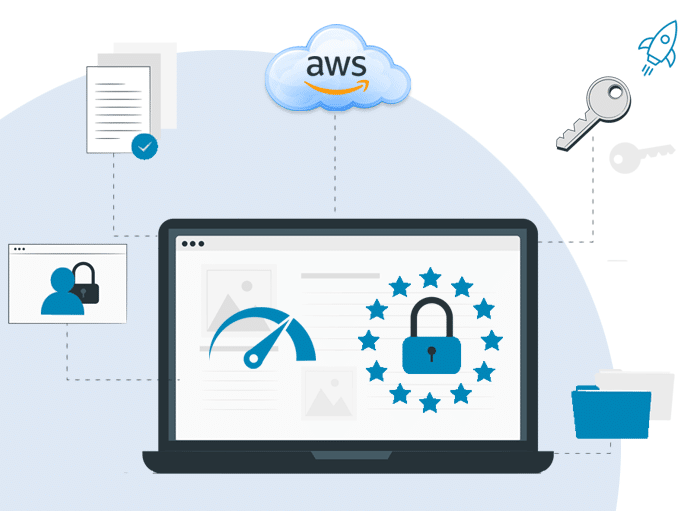
Attaining Cloud Security Compliance: What to Know?
Tags: Cloud,Security
eWay Corp September 25, 2019 2 MIN READ

With cloud beginning to reign the world of technology, many organizations are still on crossroads about whether to embrace the cloud-first strategy. One of the chief reasons for this is cloud security compliance. However, if companies clearly understand how to achieve compliance in the cloud, they can capitalize on the growth and agility offered by the public cloud.
This understanding will enable even the most heterogeneous companies to operate in a dynamically changing regulatory environment. Nevertheless, cloud security compliance comes with several challenges that need to be addressed. Let’s look at the challenges involved.
Cloud Security Compliance Challenges
When addressing requirements involved in cloud security compliance, it’s quite impossible to skip the topic of security as the controls needed for attaining compliance are implemented under the influence of security. There are certain security challenges affecting compliance success in the cloud or on-premises which organizations need to be aware of:
Information Visibility
Data was stored in the data center historically. However, that’s not the case any longer. As mobile devices have proliferated and cloud-based services and applications are increasingly being used, we are seeing a widespread dispersal of critical corporate information. The additional regulatory requirements comprising global data residency have made it more challenging to get a single view of all your data.
Advanced Threats
Data cyber threats are increased nowadays that aim to get your organization’s information. Using various methods, threat actors compromise infrastructure and systems for financial and political gains. With workforce becoming increasingly mobile, attacking organizations is easier as their edge systems are associated with insecure networks beyond their realm of control. Ransomware is one of the most popular attack vectors, which has turned into a $1 billion-a-year industry, as per recent studies.
Operational Consistency
Inconsistency in operations equates to inefficiency. The more the basic operations are standardized, the better is the efficiency; whether you are retailing, importing, manufacturing, or offering a service. With organizations moving to the cloud, the operational compliance and security functions existing on-premises have to be applied to the respective cloud services. From the perspective of compliance, increased consistency in operations makes it easier to enforce security and respond to any audit requests.
Compliance – A Shared Responsibility in Cloud
A number of organizations mistakenly assume that once the data is moved to the cloud, all responsibility pertaining to security comes upon the cloud provider entirely. However, this is not the case.
In the cloud, data security and compliance responsibility are shared among multiple parties. The higher up an organization buys into the “cloud stack”, the greater is the security compliance functionality built in.
For example, in case of a SaaS application provider, the vendor offers various additional features of security and compliance on top of the infrastructure’s security. Nevertheless, in this framework involving shared responsibility, it’s still up to customers to use the security and compliance features for ensuring that the existing on-premises policies of security extend to the cloud.
Measuring Fourth-Party Risk
Besides being effective from the perspective of scrutiny, compliance audits enable organizations to measure the fourth-party risks. Customers seeking cloud services should ensure that their primary providers adhere to industry-specific and general compliance frameworks, attestations, and audits.
While evaluating cloud service providers, customers will have to understand as well as distinguish the different demarcations as to who’s responsible to secure which portion of the cloud. We can think about it easily in the following way:
- Cloud service providers: Responsible for the cloud’s security
- SaaS providers: Responsible to provide security in the cloud
- Customers: Responsible to implement security in cloud applications
This model calls for a shift in the mindset of customers associated with on-premises, traditional environments, in which the responsibility for all aspects of security lies on them. As organizations evaluate and consider different cloud service offerings, it’s important to get an understanding of the shared responsibility involved in the cloud.
Meeting the Requirements for Cloud Security Compliance Head-On
Many customers believe that switching to the cloud, with their data stored on shared systems and held by various third parties, may involve several complexities. However, cloud services can be a more stable option and highly secure compared to employing the internal existing IT infrastructure.
Nevertheless, certain activities need to be performed to meet the regulatory cloud security compliance requirements, which are listed as follows:
- Monitoring both nontechnical and technical cloud compliance requirements continuously. This should include corporate governance, regulatory, and cybersecurity compliance controls.
- Creating operational and executive dashboards to make the cloud compliance statuses visible.
- Maintaining a unified framework or source of governance, compliance, and risk information for the way cloud services are used.
- Making sure that you can synchronize new cloud capabilities and services continuously with the regulatory compliance requirements.
- Implementing mechanisms for real-time alerting for control failures, and having defined playbooks from third-party providers on how compliance failures should be responded to.
These steps can enable your organization to navigate the tricky waters of cloud migration smoothly while remaining compliant and secure.
eWay Corp can Provide you the Right Direction
If you are planning to move to the cloud but are concerned about data protection, data security, and risk management, let the experts in cloud technology help you out! eWay Corp – an AWS partner – can facilitate seamless migration of your Microsoft Windows Server to AWS EC2, while ensuring a high degree of security, flexibility, and scalability. Besides, we can also guide you right in catering to all cloud security compliance requirements. If you’re looking for a reliable cloud technology partner, let’s talk today!



